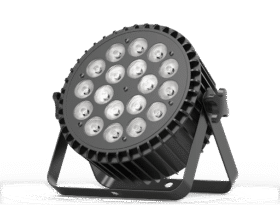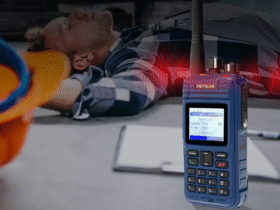Locks play a vital role in keeping your home secure, and in the UK, British Standard certification is one of the clearest indicators of quality and reliability. Whether you are protecting a residential property, a rental home, or a commercial building, knowing whether your locks meet British Standards is essential not only for your own peace of mind but also for insurance purposes. Unfortunately, many homeowners assume their existing locks are compliant without checking, leaving themselves vulnerable to security risks and potential issues with claims should a break-in occur. Understanding how to identify a British Standard lock and the steps you can take to verify compliance can help you take control of your property’s security.
Understanding What British Standards Mean for Locks
British Standards are specifications set by the British Standards Institution (BSI) to ensure products meet certain quality and safety requirements. When it comes to locks, these standards outline the level of resistance a lock must provide against picking, drilling, and forced entry. They also test durability to ensure the lock performs consistently over time. One of the most common standards you will come across for locks in the UK is BS3621, which is typically applied to mortice locks and certain cylinder locks used on external doors. This standard requires that the lock can be deadlocked and opened only with a key, providing a higher level of security.
Other related standards include BS8621, often used for locks on escape doors where keyless egress from the inside is required, and BS10621, which applies to locks that can only be locked from the outside with a key. Each standard exists to meet different security and access needs, and recognising which one applies to your property is the first step in assessing your lock compliance.
Why Insurance Providers Care About British Standard Locks
One of the most common reasons homeowners investigate their lock’s compliance is because of their home insurance policy. Many UK insurance providers explicitly require external door locks to meet a British Standard, most often BS3621. If your locks do not meet these requirements, you may find that your policy is invalidated in the event of a claim, particularly for theft. This is because British Standard locks have been independently tested to a level that significantly reduces the likelihood of successful forced entry, lowering the risk for insurers.
Even if your insurance policy does not currently stipulate British Standard locks, upgrading to them is still a sound decision. Not only does it improve your property’s security, but it also positions you more favourably if you change insurers in the future or if requirements become stricter.
Spotting the British Standard Kitemark
The most reliable way to check if your locks meet a British Standard is to look for the BSI Kitemark. This is a small symbol, usually etched into the faceplate of the lock, depicting a heart-shaped outline with an “S” inside, accompanied by the relevant standard number such as BS3621. On a mortice lock, this mark is typically found on the edge of the door where the lock mechanism is visible. On cylinder locks or rim locks, it may appear on the external faceplate or keyhole surround.
It is worth noting that not all locks bearing a Kitemark are British Standard certified for security — some may be marked for other quality standards. That is why it’s essential to also check for the specific standard number. A lock marked only with a brand name or a generic security symbol without the standard number is unlikely to meet the requirement your insurer is looking for.
Understanding the Difference Between Old and New Standards
One potential source of confusion is that British Standards evolve over time. An older lock might have been compliant when first fitted but may no longer meet the latest standard due to updates in testing procedures and performance expectations. This is especially relevant for properties that haven’t had their locks replaced in many years. Even if your current lock bears a BS3621 mark, you should check the date of manufacture if possible, as replacing older locks with the latest certified versions can provide enhanced protection against modern burglary techniques.
When the Kitemark Isn’t Visible
Sometimes, especially on painted doors or older fittings, the Kitemark and standard number may not be visible. This can happen if paint has covered the faceplate or if the marking has worn away through years of use. In such cases, you can try gently cleaning the surface to reveal the stamp. If no marking appears, you may need to remove the lock for closer inspection or consult a qualified locksmith who can quickly identify whether the lock is compliant.
Professional locksmiths are well-versed in British Standards and can often tell at a glance whether your current locks meet them. They can also recommend suitable replacements and fit them to the correct standard if an upgrade is necessary. This is particularly useful if you are in the process of selling your property, renewing your home insurance, or moving into a new home where you are unsure about the existing locks.
Considering the Door Type and Locking Mechanism
British Standards apply to a variety of locking mechanisms, and knowing your door type can help you determine which standard is relevant. For wooden doors, a BS3621 five-lever mortice deadlock is the common requirement, whereas for uPVC or composite doors, insurance-approved multi-point locking systems with a British Standard euro cylinder are often used.
For metal doors, specialist locks may be required, but these too can be British Standard certified. When replacing or upgrading a lock, it is important to ensure both the lock and the door hardware are compatible. Installing a British Standard lock on an unsuitable door may reduce its effectiveness and could void insurance approval.
The Link Between British Standard Locks and Home Security Systems
While a British Standard lock is a strong first line of defence, it works best as part of a layered security approach. Many homeowners combine these locks with additional measures such as security chains, door viewers, and smart home alarms. This not only increases protection but can also provide added reassurance to your insurer. However, the lock remains a core requirement — even the most advanced alarm system cannot compensate for a poorly secured door.
The Cost of Upgrading to British Standard Locks
Some homeowners worry that upgrading to British Standard locks will be costly, but in reality, the expense is relatively modest when compared to the potential losses from a burglary or the cost of invalidated insurance. Prices will vary depending on the type of lock and door, but in most cases, you can have a compliant lock fitted for a reasonable amount by a professional locksmith. When budgeting, it’s worth factoring in all external doors, including side or back doors and any doors to attached garages, as insurers often require all of them to meet the standard.
Checking Locks in Rental Properties
If you are a landlord, ensuring your rental property’s locks meet British Standards is not only good practice but also a responsibility under various housing regulations to provide secure accommodation. Tenants should also be aware of their rights — if you move into a property and suspect the locks are not up to standard, raising the issue with the landlord is important both for safety and to ensure the property meets insurance conditions.
Making Lock Compliance Part of Regular Home Maintenance
Checking your locks is not something that should only be done once. Just as you would inspect your roof, boiler, or smoke alarms regularly, it is worth making a habit of checking your locks every few years to ensure they remain compliant. Wear and tear can affect the effectiveness of a lock over time, and new, more secure designs become available as security technology advances. By staying proactive, you can avoid the last-minute rush to upgrade when renewing your insurance or after an attempted break-in.
British Standards and Peace of Mind
Ultimately, the purpose of a British Standard lock is to protect your home and provide reassurance that you are doing everything possible to deter intruders. Knowing how to identify and verify your locks’ compliance means you can make informed decisions about your security. Whether you are a homeowner safeguarding your family, a landlord ensuring your property meets regulations, or simply someone wanting to stay ahead of insurance requirements, understanding British Standards is an investment in safety.















Leave a Reply